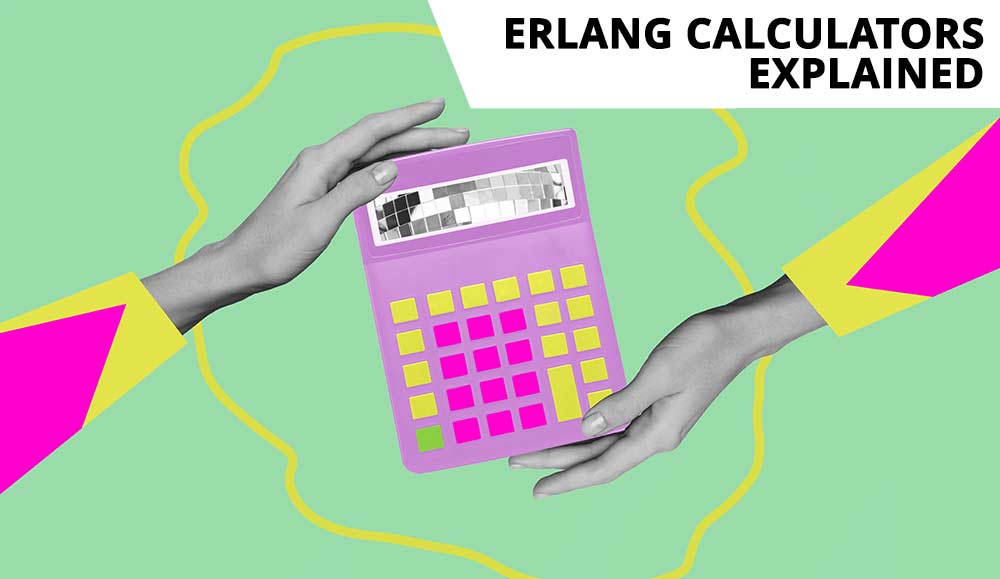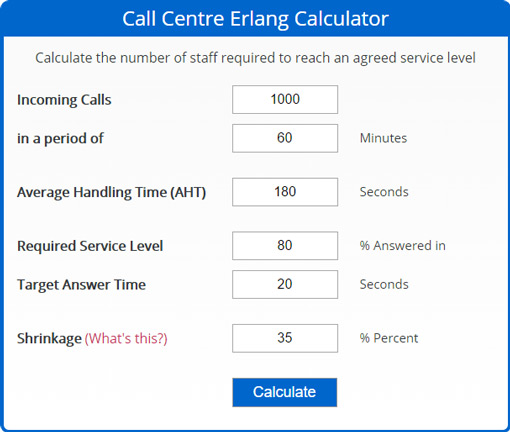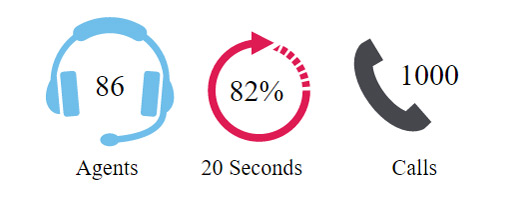29th March 2017

Accurately forecasting staffing needs is a key part of running an efficient call centre, and this is where Erlang and the Erlang Calculator come in.
An Erlang calculator is one of the most useful Workforce Management (WFM) tools in the call centre toolkit.
In this article, we’ll explore what Erlang is, how the calculator works, and why it’s a go-to resource for call centre professionals aiming to hit service targets without overspending.
An Erlang Calculator is a mathematical calculation that allows you to calculate the number of staff that you need for a given number of calls, to meet a given service level.
An Erlang Calculator uses a model based on the Erlang C formula (a derivative of the Poisson distribution) that was designed by the Danish Mathematician A.K. Erlang around 100 years ago, and used for workforce management. The formula is quite involved, but is relatively easy to follow if you studied maths to a reasonable level at school.
You simply enter in the number of phone calls that you receive in a period of time (say per half hour), along with the average duration of the calls and also the service level that you are looking for.
There are two main formats for calculators that use the Erlang model.
This Excel-based worksheet uses macros, automated input sequences or add-ins, to perform the calculations due to the complexity of the mathematics.
Whilst there are some examples where people have been able to perform the function without using macros (using the Poisson function), these tend to need multiple rows or columns to obtain the required results.
For more information on the Poisson Distribution, read our article: How Is Average Handling Time Distributed? It is not how you think!
Follow the link for our: Free Erlang C Calculator Excel – Including Shrinkage
Work out the total number of agents (FTE) required for a call volume (including shrinkage)
| Calls | Reporting Period (mins) | Average Call Duration (secs) | Required Service Level (%) | Target Answer Time (secs) | Shrinkage (%) | Agents (FTE) |
|---|---|---|---|---|---|---|
| 1000 | 60 | 180 | 80% | 20 | 35% | 86 |
This uses the Excel Formula:
=AgentsFTE(Calls, Reporting_period, Average_Call_duration, Service_level_percent, Service_level_time, Shrinkage)
For example =AgentsFTE(B30,C30,D30,E30,F30,G30)
This formula is more accurate as it includes shrinkage (holidays, training, meetings, etc.) and therefore gives a more realistic staffing requirement.
For a full explanation of shrinkage, read our article: How to Calculate Shrinkage
A new generation of Erlang calculators has emerged that are available online.
Watch this video, where Jonty Pearce, the Director of Call Centre Helper explains how the Contact Centre Erlang Online Calculator works:
Follow the link for our: Call Centre Erlang Staffing Calculator – including Shrinkage

The number of agents needed is 86 agents including 35% shrinkage (56 agents before shrinkage)
This would give a Service Level of 82.3% answered in 20 seconds
The Average Speed of Answer (ASA) would be 12.2 seconds

14,200 calls per hour, 180-second call duration, 80% of calls handled in 20 seconds (with no shrinkage if the calculator provides it).
The correct answer should be 721 agents. Many calculators will confidently predict 711 advisors (often with a Service Level Prediction of nan [not a number]).
So, enter: 14,100 calls per hour, 180-second call duration, 80% of calls handled in 20 seconds (with no shrinkage if the calculator provides it).
Every calculator will then give the right answer of 716 advisors.
This tells you that despite putting in a lower call volume, and keeping all of the other variables the same, the number of advisors has actually increased from 711 to 716, so something must be wrong.
Find some other examples that will enable you to check your Erlang Calculator below.
| Calls Per Hour | Other Inputs | Correct result | Faulty Erlang Calculators Result |
|---|---|---|---|
| 1410 | Call duration 180 secs, 80% of calls handled in 20 seconds (no shrinkage) | 716 Advisors | 716 Advisors |
| 1420 | Call duration 180 secs, 80% of calls handled in 20 seconds (no shrinkage) | 721 Advisors | 711 Advisors |
| 1500 | Call duration 180 secs, 80% of calls handled in 20 seconds (no shrinkage) | 761 Advisors | 751 Advisors |
| 2000 | Call duration 180 secs, 80% of calls handled in 20 seconds (no shrinkage) | 1011 Advisors | 1001 Advisors |
This process is vital, to ensure that your staffing calculations are as accurate as possible – with overstaffing causing great financial problems and understaffing risking both customer and advisor satisfaction.
With this in mind, we hope that this has been a great introduction to the Erlang Calculator and that we have inspired you to read more of our content – including the three articles below – so you can do the best possible job in staffing your contact centre.
To find out more about applying Erlang mathematics to the contact centre, read our articles:
Reviewed by: Megan Jones